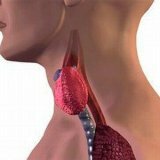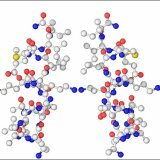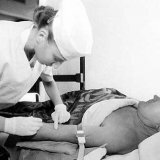Cholesterol change with age
 Cholesterol is a secondary monohydric alcohol. Since this compound is an alcohol, it is much more correct to refer to it as "cholesterol".
Cholesterol is a secondary monohydric alcohol. Since this compound is an alcohol, it is much more correct to refer to it as "cholesterol".
Cholesterol contains in all tissues and in all body fluids and in a free state, and is presented as esters - compounds of cholesterol and fatty acids. It was found that 90% of cholesterol is contained in tissues, and the remaining 10% is in tissue fluids( 8% of them are for blood).Therefore, the level of cholesterol contained in the blood may not reflect its total content in the body. More than half of the cholesterol in the body( namely about 65%) is concentrated in the nervous system, as well as in connective tissue and muscles. Large amounts of free cholesterol in obese people are found in fatty adipocytes. It should be noted that with age, there is a change in cholesterol.
What is cholesterol?
Free cholesterol is a component of plasma cell membranes, as well as membranes of the endoplasmic reticulum and mitochondria( in a smaller amount).It is used by the body for the synthesis of sex hormones, bile acids, vitamin D and corticosteroids.
Up to 80% of all cholesterol is synthesized by the liver and intestines, the rest comes from products of animal origin( butter, fatty meat, eggs).About 90% of cholesterol is excreted together with bile and approximately 10% - due to secretion of the intestinal wall.
Cholesterol is very poorly soluble in water, its transport between tissues and organs occurs due to lipoprotein complexes.
Different cholesterol fractions that differ in their composition and function are distinguished:
Lipoprotein cholesterol, having a low density, very low density, high density.
The level of cholesterol , which occurs in children at birth - is less than 3, 0 mmol / l. Cholesterol changes with age in the human blood are observed. Sex differences in the concentration of cholesterol in the blood also appear. In men, it increases in early as well as in middle age and then somewhat decreases in old age. In women, the concentration of cholesterol is gradually increasing depending on the age before the onset of menopause, and may then exceed the cholesterol level in men. This is due to the influence of sex hormones. Estrogens are lowered, and androgens increase the level of cholesterol.
When the level of cholesterol in the blood increases compared with the norm, hypercholesterolemia develops. She suffers about 10% of the population. This condition has no symptoms, but such a change in cholesterol can lead to pathological changes in the vascular walls( atherosclerosis) in the most vital organs. If the cholesterol concentration reaches more than 6, 5 mmol / l, then this is considered a risk factor for the development of the disease atherosclerosis. If threshold values of cholesterol in the blood are found, then in this case it will be superfluous to examine the cholesterol complex with the determination of the level of triglyceride and cholesterol of different fractions. The optimal LDL content is not more than 80%, HDL - not less than 20%.But the most informative indicator is the cholesteric coefficient of atherogenicity. To calculate it you need to know the level of total cholesterol and HDL cholesterol.
The calculation is carried out according to the formula:
( OX-HDL) / HDL = cholesterol coefficient of atherogenicity.
The calculation is carried out in case of atherosclerosis risk of and related cardiovascular diseases: IHD, myocardial infarction, kidney and liver diseases, pancreatic diseases, obesity, endocrine pathology( diabetes, myxedema).
In preparation for the study, blood sampling should be done in the morning on an empty stomach, no less than 12 hours after eating.
Serum is used for the study. The term of the research is one day. The measurement is performed in units of mmol / L.Recommended values of blood cholesterol level - & lt;5, 2 mmol / l, borderline values of cholesterol level - 5, 2 - 6, 5 mmol / l, increased values - & gt;6, 5 mmol / l.
HCA is dependent on many indicators( sex, age).In newborns this coefficient will not be more than 1;In healthy women from 20 to 30 years - 2, 2;In men from 20 to 30 years - 2, 5;In men aged 40 to 60 years without the presence of clinical manifestations of atherosclerosis - 3-3, 5;In individuals with ischemic heart disease - more than 4, 5, often 5-6.
In patients with HKA 2, 5 - 4, 5 there is a low risk of atherosclerosis. With indicators 4, 5 - 6, 0 - average risk, more than 6, 0 - high risk.
Hypercholesterinia is an increase in cholesterol. This disease is associated with the development of IHD, atherosclerosis, hypertension, liver disease, kidney, hepatitis, kidney failure, pancreatic diseases, chronic pancreatitis, pancreatic malignant tumors, hypothyroidism, diabetes, obesity.
Cholesterol change in the direction of decline is hypocholesterolemia. It is associated with the development of liver diseases, cirrhosis of the liver in a later stage of the disease, acute liver dystrophy, liver pathology of infectious etiology, megaloblastic anemia.
There are a number of ways to bring the level of cholesterol back to normal. These are all kinds of diets, increase in the level of physical activity, etc.
Besides, if you do not have an increase in the level of cholesterol, this does not mean that then there will be no increase. Usually, with age, the cholesterol level rises in all. Cardiologists recommend that all individuals who have reached the age of 20 years, undergo regular examinations to determine the level of cholesterol. Surveys must be conducted at least once every five years. Those who are predisposed to the development of heart and vascular diseases should undergo such a check more often. If a small excess of indicators is detected, a special corrective treatment is prescribed.



